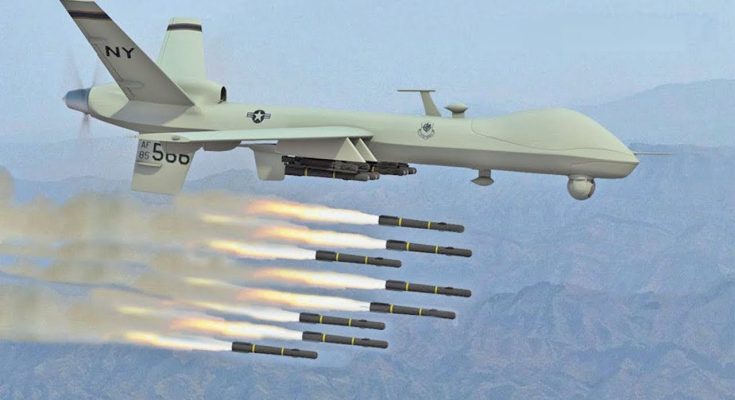The MQ-9 Reaper is one of the most powerful and versatile unmanned aerial vehicles (UAVs) in the world, often used for both intelligence gathering and precision strikes. Here’s a breakdown of its weapons load, avionics, and take-off characteristics:
1. Weapons Load
The MQ-9 Reaper is designed primarily for armed reconnaissance and precision strike missions. It can carry a substantial weapons load for a drone of its size, allowing it to deliver both guided and unguided munitions with great accuracy. Some of the key weapons it can carry include:
-
Hellfire Missiles: The MQ-9 can carry AGM-114 Hellfire missiles, a highly effective air-to-ground missile used to target both personnel and vehicles. It’s commonly used for precision strikes in counterinsurgency and counterterrorism operations.
-
GBU-12 Paveway II Laser-Guided Bombs: The MQ-9 can carry 500-pound laser-guided bombs, such as the GBU-12, which can strike enemy positions with high precision, minimizing collateral damage. These bombs are often used for taking out hardened targets like buildings, bunkers, and vehicles.
-
GBU-38 Joint Direct Attack Munition (JDAM): The MQ-9 can also carry JDAMs, which are GPS-guided bombs that provide increased accuracy in various weather conditions. These are typically used for precision bombing over longer distances.
-
50-pound Laser-Guided Bombs (GBU-58): The Reaper can carry laser-guided 50-pound bombs, offering a smaller option for surgical strikes on targets requiring less firepower.
-
External Fuel Tanks: In addition to its weapons, the MQ-9 can carry external fuel tanks to extend its range and endurance during long-duration missions.
The combination of these munitions gives the MQ-9 great flexibility in striking a wide range of targets with minimal risk to human pilots.
2. Avionics
The MQ-9 Reaper is equipped with an advanced suite of avionics that allow it to conduct complex missions with high levels of autonomy and precision. Some of the key avionics systems onboard include:
-
Multi-Spectral Targeting System (MTS): The MTS provides high-definition infrared, visible light, and laser targeting capabilities. It allows the MQ-9 to identify, track, and target enemy units in all weather conditions, day or night, and with great accuracy.
-
Synthetic Aperture Radar (SAR): The SAR is used for all-weather, day-and-night imaging, which is critical for ground surveillance and target acquisition. It allows the MQ-9 to create high-resolution images of the terrain, detect moving targets, and assist in target identification.
-
Electro-Optical/Infrared (EO/IR) Sensors: The EO/IR sensors help with real-time surveillance and target acquisition, providing the operators with a live feed of the battlefield, even in difficult conditions like low light or smoke-filled environments.
-
Communication Systems: The MQ-9 has robust communication systems for both line-of-sight and beyond-line-of-sight operations. This includes satellite communications (SATCOM), ensuring that operators can control the drone and receive real-time data over long distances, even from thousands of miles away.
-
Autonomous Flight Control: The MQ-9 is capable of autonomous flight, meaning it can execute missions without continuous human intervention, although human oversight is still typically maintained. This is particularly useful for extended surveillance missions or when performing tasks that require prolonged attention.
-
Electronic Warfare (EW) Systems: Some MQ-9 variants are equipped with electronic warfare capabilities to help jam enemy radar, communications, and other sensors, providing increased survivability in contested environments.
3. Take-Off and Operational Range
The MQ-9 Reaper is a turbo-prop UAV designed for long-range and high-endurance operations. Its take-off and operational capabilities are key to its success as a combat asset:
-
Take-Off Weight: The MQ-9 Reaper has a maximum take-off weight (MTOW) of around 10,500 pounds (4,760 kg), which includes both its fuel and weapon load. This allows it to carry substantial payloads while maintaining excellent operational range and endurance.
-
Take-Off and Landing: The MQ-9 uses a conventional runway for take-off and landing, typically requiring a runway length of about 5,000 feet (1,500 meters). Unlike other UAVs that may require shorter runways or vertical take-off and landing (VTOL) capabilities, the MQ-9 is designed for more traditional airfield operations, similar to manned aircraft.
-
Endurance and Range: The MQ-9 can stay airborne for up to 27 hours with a full load of weapons and fuel, depending on mission parameters and payload weight. This endurance allows it to conduct long-duration surveillance or strike missions over vast areas without the need for refueling.
It has an operational range of about 1,150 miles (1,850 km), which can be extended with additional fuel tanks. This range makes it ideal for missions in remote areas or across national borders.
-
Maximum Speed: The MQ-9 has a top speed of about 300 mph (480 km/h), which, while not incredibly fast, is sufficient for its role in reconnaissance and precision strikes. Its speed ensures it can reach target areas relatively quickly without drawing attention from enemy defenses.
4. Combat Flexibility
The MQ-9 Reaper’s ability to operate in both high-intensity combat zones and low-intensity conflicts gives it a unique place in modern warfare. It’s used by U.S. forces and other nations for counterterrorism, intelligence gathering, precision strikes, and border surveillance. Its ability to remain on station for hours or even days, combined with its precision weaponry, makes it an excellent asset for persistent combat presence.
Conclusion
The MQ-9 Reaper is a powerful and highly versatile drone with a broad array of weapons and advanced avionics systems, making it a formidable asset in modern warfare. Its capability to carry out precision strikes, surveillance, and reconnaissance over extended periods provides unmatched flexibility in both combat and intelligence-gathering roles. Its combination of long endurance, high payload capacity, and advanced targeting systems ensures it remains one of the most effective unmanned systems in use today.



